June 2022 - You are accessing an old version of our website. The SDGs Voluntary Commitments have been migrated here: https://sdgs.un.org/partnerships
You will be redirected to the new Partnership Platform in 10 seconds.
June 2022 - You are accessing an old version of our website. The SDGs Voluntary Commitments have been migrated here: https://sdgs.un.org/partnerships
You will be redirected to the new Partnership Platform in 10 seconds.
Ragn-Sells’s innovation company EasyMining, with potassium, nitrogen and phosphorous recirculation technology can support the returning of fossil-free elements from large waste flows to inorganic fertilisers. The Swedish Government recently convened its new panel of experts on the terms of reference on non-toxic and circular return of phosphorus from sewage sludge. One of the experts on the panel is Lisa Wigh Ragn-Sells, a agronomist and business developer with the focus on recirculation of resources from sewage sludge. At Ragn-Sells we see a future with increased pressure on sewage treatment plants and a greater need to dispose sewage sludge.
The European Union depends on imports for 90 percent of its phosphorus. However, sewage sludge from water treatment plants contains large quantities of phosphorus, of which only a minor part is recovered and put to agricultural use today.
Ragn-Sells believes that the practice of returning nutrients from sewage sludge to arable land must grow significantly. Returning nutrients in this way reduces the use of limited virgin resources.
We offer sewage treatment plants the opportunity to have us manage disposal of all sewage sludge quality types with full traceability and careful documentation that adheres to rules and regulations.
The objective of Ragn-Sells’ work is:
- to increase the proportion of recirculated phosphorous in order to reduce the extraction of virgin phosphorous
- to bring about legislation containing requirements for return of phosphorous from sewage sludge to arable land and other productive land (SDG 2.1, SDG 2.3, SDG 2C, SDG 8.4)
- to increase management of nitrogen in order to decrease the need for nitrogen in the form of fertilisers (SDG 8.4, SDG 12.2)
- to ensure that only phosphorous recovery that actually replaces virgin raw materials is counted as fulfilling the legal requirement (SDG 3.9, SDG 9.4, SDG 12.4)
- to bring about legislation that requires phosphorous to be recovered from ash and channelled back into agriculture if sewage sludge is burnt (SDG 9.4, SDG 11.6, SDG 17.16)
- to ensure that the spreading of sewage sludge directly onto arable land takes place in a way that ensures quality and sustainability (SDG 3.9, SDG 12.2, SDG 12.4)
- to ensure that use of sewage sludge, regardless of the means, takes place in a way that does not pose an unnecessary risk of nutrients leaking into waterways, lakes and seas, contributing to eutrophication (SDG 6.3, SDG 6.6, SDG 11.6, SDG 14.1, SDG 15.1). In our sales materials we state which SDGs customers support by allowing us to take care of disposal of their sewage sludge.
Ragn-Sells innovation company EasyMining driving development of global patent on technology for recovery of phosphorous and other substances from sewage sludge. The ICC used as business example at COP23 Bonn. Ragn-Sells invited to present its technology at the HLPF, UN SDG Business Forum 17 July 2018 in New York. Society and its residents to support sustainable food production and other related industrial processes. Work on influencing municipalities to increase recycled materials in public procurements. Sewage treatment plants in Germany, Denmark and Sweden. Agriculture for the disposal of sewage sludge. Mines LKAB. Legislation on the recirculation of resources must be changed.
We already offer sewage treatment plants the opportunity to have us manage disposal of all sewage sludge quality types with full traceability and careful documentation that adheres to rules and regulations. We return phosphorous from sewage sludge to arable land and other productive land by that saving virgin resources and increasing the food production with secured fertilizer.
The process patent of Ash2®Phos is in pilot tests in Germany, Denmark and Sweden making use of the ashes from energy recycling on sewage sludge. The patent ReeMAP can be used in mining industry and LKAB (Swedish mining industry) has made a Feasibility showing that a full-scale industrial production of MAP will correspond to an estimated 500 percent of Swedish demand and production of Rare Earth Methals (REE) will amount to about 2 percent world production. The pilot phase will continue through 2020.
German legislation states that 80% must be recycled and RS’s innovation company EasyMining is the only company that meets their quality requirements. Potential to extract 63,000 tonnes of phosphorous in Germany alone. The impact would be reducing the import of virgin materials by 90%.
Denmark can reduce its imports by 10% by using RS’s technology.
Use of the technology reduces the heavy metal content to 0%, unlike when unearthing virgin phosphorous, which contains cadmium and uranium.
A global patent has been granted for the technology.
The process patent ReeMAP is used in mining industry and LKAB (Swedish mining industry) has made a Feasibility showing that a full-scale industrial production of MAP will correspond to an estimated 500 percent of Swedish demand and production of Rare Earth Methals (REE) will amount to about 2 percent world production. The pilot phase will continue through 2020.
Despite detoxification and full traceability, as well as careful documentation adhering to rules and regulations, there is a sceptical attitude towards the spreading of sewage sludge in Sweden. This can then make it problematic to find agricultural sites for disposal of sewage sludge. Legislation is needed to care about the Resources already available.
Chemical processes for the extraction of clean commercial products.
Commercialises patented processes.
Ash2®Phos – phosphorus recovery from sludge ash.
CleanMAP® – energy efficient production of ammonium phosphate.
ReeMAP – ammonium phosphate and REE recovery from LKAB’s mine waste.
Ash2®Salt – salt recovery from waste incinerator fly ash.
Project N – nutrient recovery from waste water.
Preconditions to steer the technology towards more extensive recycling requires legislative changes in order to achieve circular economy. Germany is exemplary in its legal requirement for the recirculation of 80% of sewage sludge.
Despite detoxification and full traceability, as well as careful documentation adhering to rules and regulations, there is a sceptical attitude towards the spreading of sewage sludge in Sweden. This can then make it problematic to find agricultural sites for disposal of sewage sludge. Legislation and demands on circularity and re-use of resources in procurement is needed.
The growth of vegetables and plants increases by 100% with phosphorous.
The technology for the extraction of phosphorous can be used in the extraction of materials in the mining industry too.
Waste hierarchy to resource hierarchy is the future for circular solutions.
Today, 50% of the food produced in the world is dependent on nutrients (including phosphorus) from mineral fertilizers, and the need for these nutrients is increasing. However, 80% of the world’s mineable resources of phosphorus also contains cadmium and uranium which end up as containments in the soil. Additionally, in order to turn these ores into fertilizers, large amounts of fossil fuels are required. This is not sustainable!
Another challenge for cities is to safely handle an increasing amount of hazardous sludge from waste water treatment. Currently, most of the nutrients in the resulting waste are not circulated back to arable land. They are effectively lost to our economies. Legislation is needed now to secure our future.
Zero hunger – as we have only finite resources, circular solutions are required to fulfil the need for sustenance for everyone on this planet.
Waste hierarchy to resource hierarchy is the future for circular solutions.
Lisa takes place on the Government’s panel of experts on sewage sludge https://www.ragnsells.com/articles/lisa-wigh/
Ragn-Sells and Gelsenwasser enter partnership on phosphorus recovery in Germany https://www.ragnsells.com/articles/ragn-sells-and-gelsenwasser-enter-partnership-on-phosphorus-recovery-in-germany/
Ragn-Sells CEO invited to speak at the UN SDG Business Forum 2018 https://www.ragnsells.com/articles/ragn-sells-ceo-invited-to-speak-at-the-un-sdg-business-forum-2018/
RAGN-SELLS TACKLES WORLD PROBLEM WITH NEW INNOVATION https://www.ragnsells.com/globalassets/1.-ragn-sells-group/articles/180628_ragn-sells_tackles_world_prob_phosohurus.pdf
Ragn-Sells and BIOFOS enter partnership on phosphorus recovery in Denmark https://www.ragnsells.com/about-ragn-sells/newsroom/#/pressreleases/ragn-sells-and-biofos-enter-partnership-on-phosphorus-recovery-in-denmark-2816447
Phosphorus, top of the agenda at World Resources Forum in Belgium https://www.ragnsells.com/about-ragn-sells/newsroom/#/pressreleases/phosphorus-top-of-the-agenda-at-world-resource-forum-in-belgium-2840349 LKAB invests in pilot plants for phosphorus and rare earth metals https://www.lkab.com/en/news-room/press-releases/lkab-invests-in-pilot-plants-for-phosphorus-and-rare-earth-metals/?aid=16447
Återvunnen fosfor – en resurs vi måste ta tillvara https://www.dagenssamhalle.se/debatt/atervunnen-fosfor-en-resurs-vi-maste-ta-tillvara-25987 (in Swedish) Municipalities need circular procure requirements https://www.ragnsells.se/inspireras/kommuner-dags-att-handla-hallbart
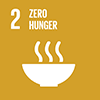


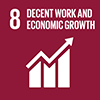
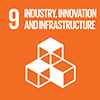
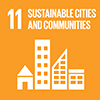
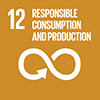

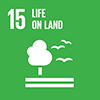
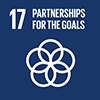
 Start: 28 January, 2013
Start: 28 January, 2013 Completion: 28 February, 2021
Completion: 28 February, 2021